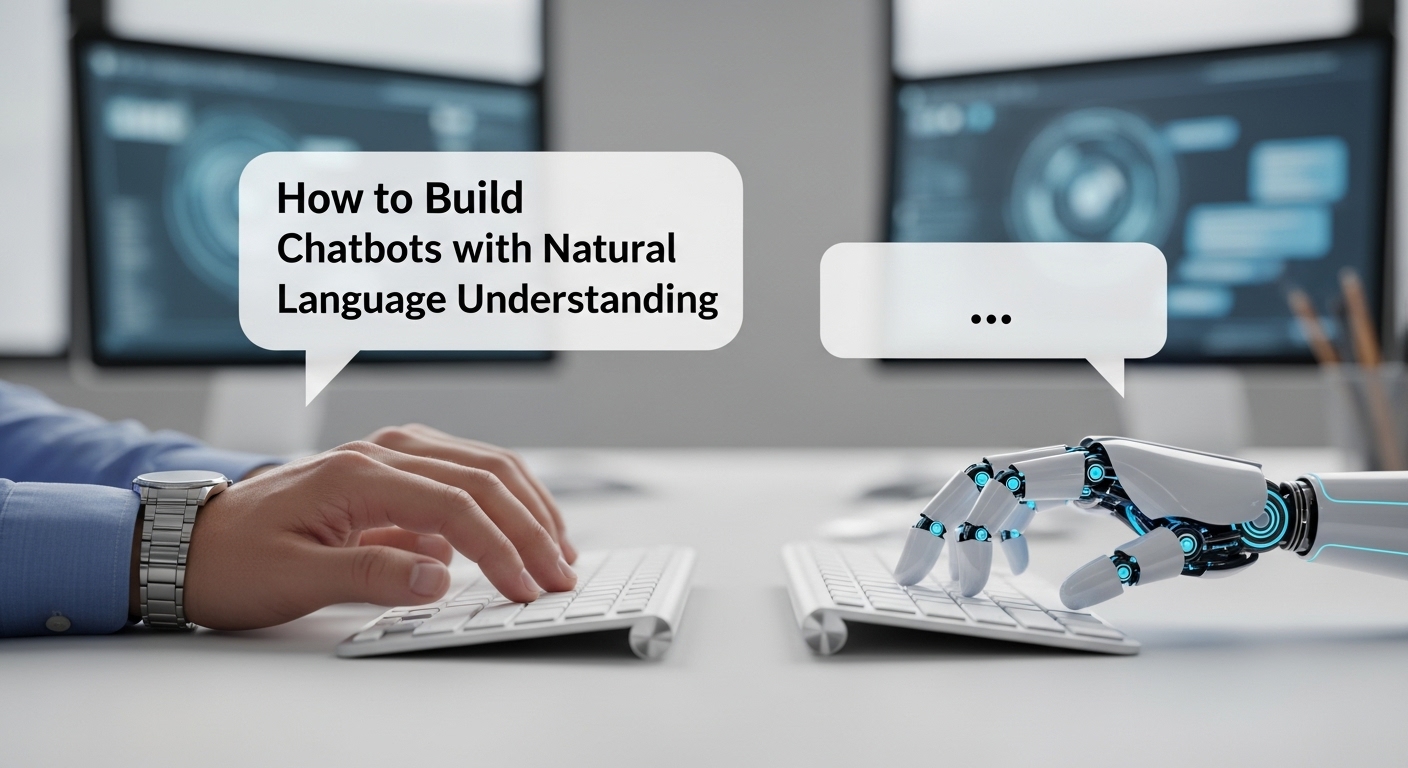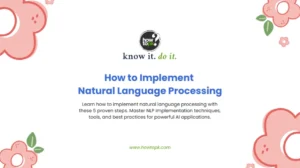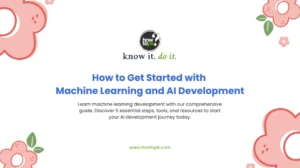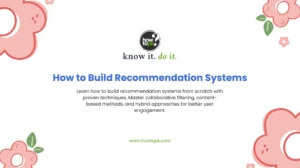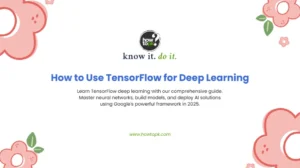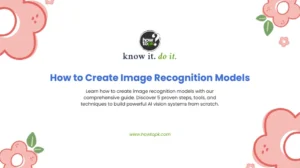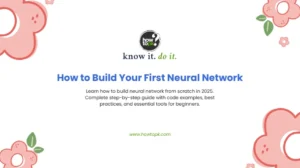Building chatbots with natural language understanding has become essential for businesses seeking to provide intelligent, human-like customer interactions. This comprehensive guide will walk you through the complete process of creating sophisticated conversational AI systems that truly understand and respond to user intent.
What Are Chatbots with Natural Language Understanding?
Chatbots with natural language understanding represent the next evolution in conversational AI technology. Unlike simple rule-based bots that follow predetermined scripts, these intelligent systems leverage natural language processing (NLP) to comprehend context, intent, and sentiment in human communication.
These advanced chatbots can interpret variations in language, handle complex queries, and maintain contextual awareness throughout conversations. They bridge the gap between human communication patterns and machine understanding.
Why Natural Language Understanding Matters for Modern Chatbots
Traditional chatbots often frustrate users with rigid, scripted responses. Chatbots with natural language understanding solve this problem by:
- Processing multiple ways users express the same request
- Understanding context and maintaining conversation flow
- Recognizing sentiment and emotional cues
- Handling ambiguous or incomplete queries
- Learning from interactions to improve responses
Core Components of NLP-Powered Chatbots
- Intent Recognition: Intent recognition forms the foundation of intelligent chatbots. This component analyzes user input to determine what the user wants to accomplish. Modern NLP models can identify intents even when users express them differently.
- Entity Extraction: Entity extraction identifies specific pieces of information within user messages. For example, in “Book a flight to Paris tomorrow,” the system extracts “Paris” as the destination and “tomorrow” as the date.
- Context Management: Context management ensures chatbots remember previous conversation elements and maintain coherent dialogue flow. This component tracks conversation state and user preferences across interactions.
- Response Generation: Response generation creates appropriate, contextually relevant replies based on understood intent and extracted entities. Advanced systems use neural language models for more natural responses.
Essential Technologies for Building NLP Chatbots
Technology | Purpose | Popular Options |
NLP Libraries | Text processing and understanding | spaCy, NLTK, Transformers |
ML Frameworks | Model training and inference | TensorFlow, PyTorch, Scikit-learn |
Chatbot Platforms | Development and deployment | Rasa, Dialogflow, Microsoft Bot Framework |
Cloud APIs | Pre-trained NLP services | Google Cloud AI, AWS Comprehend, Azure Cognitive Services |
Step-by-Step Guide to Building Chatbots with Natural Language Understanding
Step 1: Define Your Chatbot’s Purpose and Scope
Before diving into development, clearly outline your chatbot’s objectives. Determine:
- Target use cases and user scenarios
- Required conversation topics and domains
- Expected user interaction patterns
- Performance and accuracy requirements
Step 2: Choose Your Development Approach
You have several options for building chatbots with natural language understanding:
- Framework-Based Development: Use platforms like Rasa or Microsoft Bot Framework for full control over your chatbot’s behavior and customization capabilities.
- Cloud-Based Solutions: Leverage services like Dialogflow or Amazon Lex for rapid development with pre-trained NLP models and managed infrastructure.
- Hybrid Approach: Combine multiple tools and services to balance customization needs with development speed.
Step 3: Design Your Conversation Flow
Map out potential conversation paths and user journeys. Create flowcharts showing:
- Entry points and greeting scenarios
- Main conversation branches
- Error handling and fallback responses
- Integration points with external systems
Step 4: Prepare Training Data
High-quality training data is crucial for effective NLP chatbot development. Gather:
- Sample user utterances for each intent
- Entity examples in various contexts
- Conversation logs from existing channels
- Edge cases and error scenarios
Aim for at least 20-50 examples per intent, with diverse phrasings and structures.
Step 5: Implement Natural Language Understanding
Configure your chosen NLP solution to handle:
- Intent Classification: Train models to recognize user goals from text input. Use techniques like bag-of-words, TF-IDF, or transformer-based embeddings.
- Entity Recognition: Set up named entity recognition to extract relevant information. Consider both rule-based and machine learning approaches.
- Sentiment Analysis: Integrate sentiment detection to adjust chatbot tone and escalation triggers appropriately.
Step 6: Build Dialog Management
Implement conversation logic that:
- Maintains context across multiple turns
- Handles slot filling for complex requests
- Manages conversation state transitions
- Provides appropriate fallback responses
Step 7: Integrate External Systems
Connect your chatbot to relevant backend systems:
- Customer relationship management (CRM) platforms
- Knowledge bases and FAQ systems
- E-commerce and booking platforms
- Analytics and monitoring tools
Advanced Techniques for Intelligent Chatbot Creation
Machine Learning Model Selection
Choose appropriate ML models based on your specific requirements:
- Traditional ML Approaches: Use algorithms like Support Vector Machines or Random Forest for smaller datasets with well-defined features.
- Deep Learning Models: Implement neural networks, including LSTM or transformer architectures, for complex language understanding tasks.
- Pre-trained Language Models: Leverage models like BERT, GPT, or T5 for advanced natural language understanding capabilities.
Multi-turn Conversation Handling
Implement sophisticated dialog management for conversational AI implementation:
- Track conversation history and context
- Handle interruptions and topic switches
- Manage complex multi-step processes
- Provide conversation summaries when needed
Personalization and Learning
Build adaptive chatbots that improve over time:
- Store user preferences and interaction history
- Implement feedback loops for continuous learning
- Use reinforcement learning for response optimization
- A/B test different conversation strategies
Testing and Evaluation Strategies
Comprehensive Testing Framework
Develop thorough testing procedures for your natural language processing chatbots:
- Unit Testing: Verify individual NLP components work correctly with expected inputs and edge cases.
- Integration Testing: Ensure all system components communicate properly and maintain data consistency.
- User Acceptance Testing: Conduct real user testing sessions to validate conversation quality and user experience.
Key Performance Metrics
Monitor these essential metrics:
Metric | Description | Target Range |
Intent Accuracy | Percentage of correctly identified intents | >85% |
Entity Recognition | Accuracy of extracted entities | >90% |
Conversation Completion | Users completing intended tasks | >70% |
User Satisfaction | Feedback scores and ratings | >4.0/5.0 |
Deployment and Scaling Considerations
Infrastructure Requirements
Plan for scalable deployment:
- Choose cloud platforms that support auto-scaling
- Implement load balancing for high-traffic scenarios
- Design for horizontal scaling across multiple servers
- Consider edge computing for reduced latency
Monitoring and Maintenance
Establish ongoing maintenance procedures:
- Monitor conversation quality and user satisfaction
- Regularly update training data with new examples
- Retrain models periodically to maintain accuracy
- Track system performance and resource usage
Common Challenges and Solutions
Handling Ambiguous Queries
Users often provide unclear or incomplete information. Address this by:
- Implementing clarification dialogs
- Using context clues from conversation history
- Providing multiple interpretation options
- Gracefully handling uncertainty with helpful responses
Managing Conversation Context
Maintaining context across long conversations requires:
- Efficient context storage and retrieval systems
- Clear context boundaries and reset triggers
- User-friendly conversation navigation options
- Robust session management capabilities
Future Trends in NLP Chatbot Development
The field of chatbots with natural language understanding continues evolving rapidly. Key trends include:
- Multimodal Interactions: Integration of voice, text, and visual inputs for richer user experiences.
- Emotional Intelligence: Advanced sentiment analysis and empathetic response generation.
- Domain Specialization: Highly specialized chatbots for specific industries and use cases.
- Conversational Commerce: Seamless integration of chatbots with e-commerce and transaction systems.
Best Practices for Success
Follow these proven strategies when building intelligent chatbot creation projects:
- Start with clear, limited scope and expand gradually
- Prioritize user experience over technical complexity
- Implement comprehensive logging for continuous improvement
- Regular testing with real users throughout development
- Plan for multilingual support from the beginning
- Ensure proper data privacy and security measures
Conclusion
Building chatbots with natural language understanding requires careful planning, appropriate technology selection, and continuous refinement. By following this comprehensive guide, you can create intelligent conversational AI systems that provide genuine value to users while achieving your business objectives.
Success in this field comes from combining technical expertise with user-centered design principles. Focus on understanding your users’ needs, implementing robust NLP capabilities, and maintaining high-quality conversation experiences.
The investment in developing sophisticated natural language processing chatbots pays dividends through improved customer satisfaction, reduced support costs, and enhanced user engagement. Start with a clear vision, choose the right tools, and iterate based on user feedback to build truly intelligent conversational experiences.
Resources

